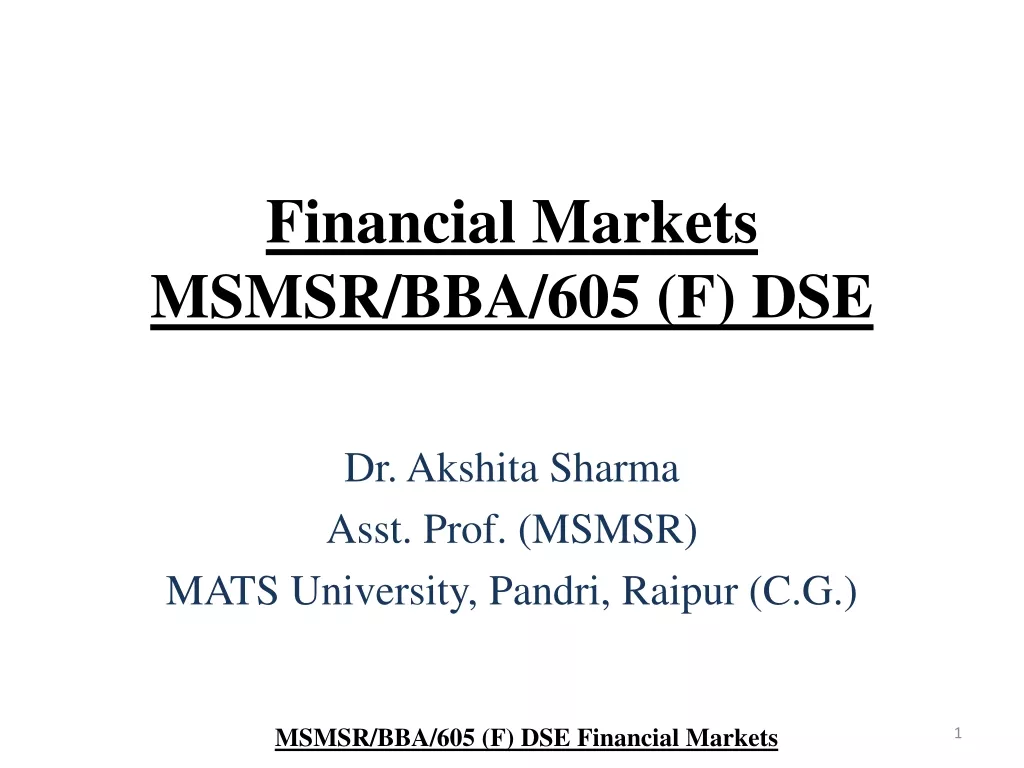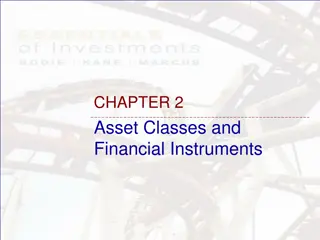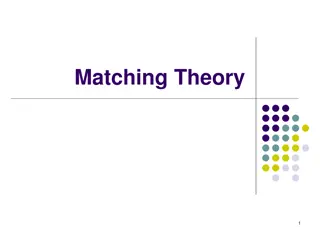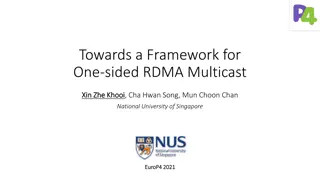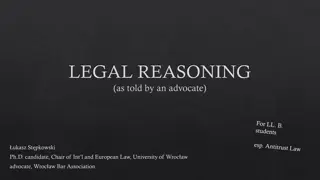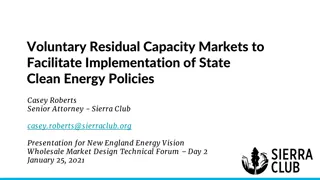Insights into Multi-Sided Markets and Legal Approach
Explore the complexities of multi-sided markets and the challenges they pose for traditional antitrust analysis. The practical application of economic insights to legal enforcement in these scenarios requires a shift in approach to accommodate interdependent systems and disruptive innovations.
Download Presentation

Please find below an Image/Link to download the presentation.
The content on the website is provided AS IS for your information and personal use only. It may not be sold, licensed, or shared on other websites without obtaining consent from the author.If you encounter any issues during the download, it is possible that the publisher has removed the file from their server.
You are allowed to download the files provided on this website for personal or commercial use, subject to the condition that they are used lawfully. All files are the property of their respective owners.
The content on the website is provided AS IS for your information and personal use only. It may not be sold, licensed, or shared on other websites without obtaining consent from the author.
E N D
Presentation Transcript
The double duality of two-sided markets Multi-sided markets: Economics insight & Legal experience AECLJ, Uppsala, 5 June 2015 Alfonso Lamadrid de Pablo
Introduction a practical approach Increasing relevance of multi-sided markets and business models reflected in academic writings and enforcement Most literature is eminently theoretical and market-specific Most competition authorities adopt a too early to tell approach BUT, perhaps we know all we need to know about two- sided markets to refine our legal approach to them Takeaway: What is missing is not empirical work but practical articulation of well established principles How the competition law system is likely to incorporate and apply new knowledge Identify the scenarios in which the multi-sidedness of a market justifies a change in approach Reconcile the nature and needs of judicial law-making with economic insights
On the Inapplicability of Traditional Tools and Rules This pattern of cross responses will generally affect each step of standard antitrust analysis, from product market definition, the competitive assessment, entry, efficiencies, etc , EC, OECD Roundtable 2009 It s the best possible time to be alive, when almost everything you thought you knew is wrong Tom Stoppard, Arcadia, Act I, Scene Four Multi-sided scenarios pose unique practical problems that take competition law out of its comfort zone Interdependency, the pattern of cross-responses and velocity make everything a bit more complicated Having to apply competition law to multi-sided markets breaks the inertia and forces us not to do things like we used to Incorporating these insights to the needs of day-to-day enforcement: - Economics vs reality of judicial law-making, or abstract models and tests vs evidence-intensive inquiry in a concrete factual scenario - The engagement with complex economic assessments - Disruptions do not fit with well with the nature of the legal system, which by definition evolves incrementally on a case-by-case basis
On the double duality of business practices in multi-sided platforms (I) There are always two sides to every story MSPs receive special attention when they involve two (or more) sets of users that interact with each other through the platform (1stduality) A second element of duality of two-sided markets = competitive ambiguity of the practices carried out in these settings The features of multi-sided platforms may lead to foreclosure are precisely the same ones in which they may be welfare enhancing Competitive ambiguity derives from the existence of network externalities Takeaway: striking a balance between the two sides, in this case the offensive/anticompetitive and the defensive/procompetitive Challenges in practice: is this a factual claim or a legal issue How should enforcers deal with the ambivalence of a practice? How review courts should engage with the conclusions drawn from this ambivalence?
On the double duality of business practices in multi-sided platforms (II) Multi-sided market features as a sword - The doctrine and the application of the law in the face of network effects have tended to focus on their anticompetitive potential (paradoxical for a positive externality) (e.g. Guidance Paper, 17, 20; Guidelines horiz. mergers, 72; Guidelines non-horiz mergers, 62 and 101) - Network effects are a most effective basis for legal arguments challenging allegedly anticompetitive conduct: - - Prices too high (e.g. MIFs- card payment systems) Prices too low (e.g. Google Maps --Bottin case- and Android complaint) Prices too stiff (MFNs in online distribution) Exclusivity (Google AdWords) Tying/Bundling (Microsoft WMP and IE) Competitive Bottlenecks / Gatekeepers (Search engines, GDSs, ISPs, Credit Cards, Supermarkets, etc) Mergers: (e.g. MCI/Worldcom, Worldspan/Travelport, Google/DoubleClick, Microsoft/Skype) - - - - -
On the double duality of business practices in multi-sided platforms (III) Multi-sided market features as a shield -Economic literature shows that demand-side efficiencies achieved by MSPs may turn typically condemned practices into welfare enhancing ones: Yoda A Jedi only uses the force for defense and knowledge Master - In spite of conceivable defences, still most rare to see demand- side efficiencies being effectively acknowledged as a valid defense in real cases, due to: (i) Requirement of objective quantification of efficiencies + inexistence of tool to quantify demand-side efficiencies (e.g. MasterCards s MIFs) (iii) Inability to trade off the pros and cons of having one large scaled platform and the circumstances in which one platform is preferable to having several (e.g. GC MasterCard (para. 22) and GC Microsoft (paras. 1152-1153). (ii) Interpretation of the rules has not, until now, favoured cross-market efficiency assessments (e.g Guidelines 81(3), para 43 and GC Mastercard (240-243)
Acknowledging a practical imbalance Aligning oneself fully with the left, as with the right, is only one of the numberless ways open to man of being an imbecile: both are forms of moral hemiplegia. Acknowledgment is the first step Alcoholics Anonymous and others Jos Ortega y Gasset - Takeaway: whereas business practices in multi-sided platforms are often pro- competitive, or at least ambiguous from a competitive standpoint, the practical application of the law reflects an imbalance in which offensive arguments are favored and conceivable defenses are often effectively ignored. Asymmetry in standard of proof Against this background, not only economic tools that need to be refined in the presence of MSPs. The law or rather the application thereof- also needs to refine itself. No legal revolution but analytical vigilance at three levels: (i) Interpretation of 101(3) (ii) Burden of persuasion/proof (iii) Limiting principles - - -
Addressing a practical imbalance (I) The natural way: a reasonable interpretation of 101(3) From an orthodox perspective, welfare enhancing features pertain to a 101(3) analysis Restrictive (wrong?) interpretation of 101(3) at the root of many current problems in EU Competition law, also regarding MSPs Reasonable competition policy: less object, more effect, much more 101(3): Traditional interpretation of 101(3) (pre-Guidelines) did not require objective quantification Traditional interpretation of 101(3) (pre-Guidelines) did allow for cross-market assessments, also regarding distinct groups of customers (e.g. para 228 in GC s Mastercard unsupported by previous case-law) (contra: ECJ in CGM or Publishers Association, para 29, among others) (For more, see next)
Application of 101(3) Can efficiencies obtained in one market be balanced against the restrictions of competition caused in a different market? 1) This question first arose before EU Courts in Compagnie G n ral Maritime and others (T - 86/95, pp. 343-345): For the purposes of examining the merits of the Commission s findings as to the various requirements of Article [101(3)] of the Treaty ( ) regard should naturally be had to the advantages arising from the agreement in question,not only for the relevant market ( ) but also,in appropriate cases, for every other market on which the agreement in question might have beneficial effects,and even,in a more general sense,for any service the quality or efficiency of which might be improved by the existence of that agreement 2) Then came the Guidelines on 81(3) (p. 43): Negative effects on consumers in one geographic market or product market cannot normally be balanced against and compensated by positive effects for consumers in another unrelated geographic market or product market. However, where two markets are related, efficiencies achieved on separate markets can be taken into account provided that the group of consumers affected by the restriction and benefiting from the efficiency gains are substantially the same . 3) General Court in MasterCard (T-111/08, pp. 228): [A]s merchants constitute one of the two groups of users affected by payment cards, the very existence of the second condition of Article 81(3) EC necessarily means that the existence of appreciable objective advantages attributable to the MIF must also be established in regard to them .
Application of 101(3) Can efficiencies obtained in one market be balanced against the restrictions of competition caused in a different market? 4) AG s Opinion in MasterCard (C-382/12 P) also touched on this issue (pp. 157-160): it is the consumers that suffer the harm caused by the restrictive effects of the agreement at issue that must, in principle, be allowed, as compensation for that harm, the fair share of the benefit resulting from the agreement . [T]hose considerations are not necessarily inconsistent with the settled case- law of the GC ( ), according to which it is not excluded that it may be possible to take into consideration the advantages resulting from the agreement that occur on a different market because [s]uch advantages may be taken into consideration where, for example, the category of consumers affected by the agreement on the two separate markets is the same 5) The ECJ in Mastercard is clearly better but insufficient (p.237): [I]t is necessary to take into account the system of which that measure forms part, including, where appropriate, all the objective advantages flowing from that measure not only on the market in respect of which the restriction has been established,but also on the market which includes the other group of consumers associated with that system, in particular where, as in this instance, it is undisputed that there is interaction between the two sides of the system in question 6) Meanwhile, DG Italianer (speech from Sep 2013): [T]he Commission for the first time accepted so-called out-of-market efficiencies. These are efficiencies which are generated on the markets other than the markets where concerns were identified. [The] test applied in Star represents a broadening of the standard test because it does not require the parties to demonstrate that the groups of consumers travelling on the market(s) of concern and related markets are substantially the same , in order to credit any efficiencies generated on these related (other) markets
Addressing a practical imbalance (II) Burden of proof- anticipating multi-sided considerations (the Court s recent approach?) Not leave multi-sided considerations play a role at the tail-end of the analysis- specific acknowledgment of economic and legal context and explicit discussion prior to the finding of the prima facie restriction (i.e. prior to shifting burden of proof). Two-sided nature as part of economic and legal context to be assessed. Seems to be the approach favored by the ECJ in Cartes Bancaires (paras 73-79) and Mastercard (paras 179-182 )
Addressing a practical imbalance (III) Revisiting basic limiting principles Need to set filters or bright lines capable of adding some predictability and consistency to the law: 1. Absence of rivalry does not equal infringement 2. Remedies and objective justifications follow the establishment of an infringement by the authority, not the other way around 3. Companies shall be free to choose their business model - competition law is agnostic and authorities are not omniscient 4. Competition law is about protecting the process of competition from undue restraints 5. Competition law should be applied consistently and there is no reason to favor one parameter of competition over others 6. In the face of doubt- don t chill competition (asymmetry should go the other way around)
Conclusions Economic lessons have served us well Some problems are so complex that you have to be very well informed just to be undecided about them In spite of consensus on duality of MSP features, there is an imbalance in the practical application of the law Need to be aware of that imbalance and to correct it at the level of the interpretation and application of the law Analytical vigilance (abandon traditional reflexes), not policy revolution. Natural task of review courts With the help of some basic tenets of competition law, account for complexity in practical enforcement A reminder of the fallibility of competition law
Alfonso Lamadrid de Pablo BRUSSELS EU & Competition Law alfonso.lamadrid@garrigues.com +32 2545 37 00


